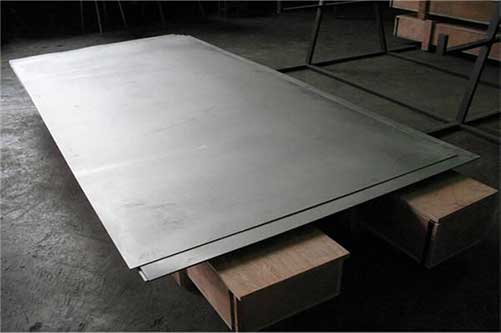Nimonic 263 Alloy: High-temperature components for aerospace engines (marketing department of Shanghai HY Industry Co., Ltd)
Nimonic 263 Alloy Overview:
Nimonic 263 nickel-based superalloy has excellent high-temperature stability and thermal fatigue resistance, and can be used in high-temperature environments for a long time.
The alloying elements and added rare earth elements in Nimonic 263 can form a dense oxide film, providing excellent anti-oxidation protection.
Nimonic 263 has high creep strength and creep rupture toughness at high temperatures.
Nimonic 263 contains a certain amount of alloying elements such as chromium and molybdenum, which gives it good corrosion resistance, especially in oxidizing and reducing atmospheres.
Nimonic 263 Alloy applications:
Aerospace field: Nimonic 263 is commonly used in turbine blades, turbine disks, combustion chambers, etc., and can withstand the requirements of high temperature and high stress environments.
Chemical industry: Due to its good corrosion resistance, Nimonic 263 can be used in chemical equipment, high temperature reactors, high temperature heat exchangers and other fields that require corrosion resistance and high temperature performance.
Energy field: Nimonic 263 is suitable for high-temperature components in gas turbines, gas turbines, steam turbines in nuclear power plants, and coal-fired boilers to provide stable energy supply.
Heat treatment method of Nimonic 263 Alloy:
Generally the following steps can be taken:
1. Solid solution treatment: Heat the Nimonic 263/GH4163 alloy to the solid solution temperature, usually in the range of 1100℃-1180℃, and keep it warm for a period of time to uniformly dissolve the alloy elements and hard phases in the alloy. Usually, the holding time is determined by the cross-sectional thickness and structural properties of the alloy. It is then cooled rapidly to avoid the formation of phase separation.
2. Cooling treatment: After solid solution treatment, rapid cooling methods such as water cooling or oil cooling are usually used to quickly bring Nimonic 263 Alloy from high temperature to room temperature. The purpose of this step is to fix the dissolved elements in the alloy and try to avoid the formation of intergranular corrosion and phase separation.
3. Aging treatment: After solid solution treatment and cooling treatment, the supersaturated solid solution and hard phase of the alloy will appear. In order to further enhance the performance of the alloy, Nimonic 263 Alloy can be heated again, usually in the range of 750℃-950℃ for a period of time, and then air-cooled or water-cooled to achieve termination of aging.
Nimonic 263 chemical component:
Weight% |
Ni |
Cr |
Mn |
Si |
C |
Al |
Ag |
B |
Fe |
Nimonic 263 |
Bal |
19-21 |
0.60 max |
0.40 max |
0.04-0.08 |
0.60 max |
0.0005 max |
0.005 max |
0.07 max |
Weight% |
Cu |
Mo |
Co |
Ti |
Al+Ti |
Pb |
Bi |
S |
|
Nimonic 263 |
0.20 max |
5.6-6.1 |
19-21 |
1.90-2.40 |
2.40-2.8 |
0.0020 max |
0.0001 max |
0.007 max |


